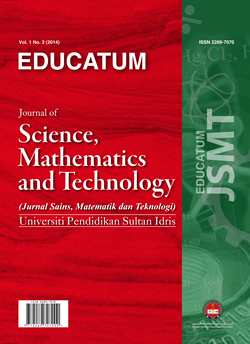Forecasting Modelling of Adolescent Pregnancy Crisis in Malaysia Using Runge-Kutta Fourth Order Method
DOI:
https://doi.org/10.37134/ejsmt.vol10.2.2.2023Keywords:
adolescent pregnancy, Malaysia, Runge-Kutta, teenage girlsAbstract
Despite the significant dangers that countries suffer when adolescent pregnancy is neglected, this major problem usually receives little attention. In recent decades, the number of teenage girls who get pregnant has increased worldwide. Therefore, this issue has become many countries' main public health concern. This paper aims to use MATLAB to estimate Malaysian teen pregnancy data for the next few years and to find missing data for a particular year. Since the Runge-Kutta is used to forecast the prevalence of adolescent pregnancy in Malaysia, the comparison reveals that the two sets of data are distinct. Therefore, the order four Runge-Kutta method is insufficient to approximate incomplete data for adolescent pregnancy. Although the results show that adolescent pregnancy has decreased over time, we must continue to treat this issue seriously. It is necessary to educate teenagers about sex education and safe pregnancy. Educating the young about the risk of having pregnancies in their early years is also necessary. Additionally, it is necessary to provide special consideration to those who did not grow up in a good environment and belong to a family unit that does not function in a healthy way according to social norms.
Downloads
References
T. Mekonnen, T. Dune, and J. Perz, "Maternal health service utilisation of adolescent women in sub-Saharan Africa: a systematic scoping review.," BMC Pregnancy Childbirth, vol. 19, pp. 1–16, 2019, doi: 10.1186/s12884-019-2501-6.
World Health Organization, "Adolescent pregnancy: adolescence is a time of opportunity during which a range of actions can be taken to set the stage for healthy adulthood. (No. WHO/RHR/14.08)," 2014.
Ministry of Health Malaysia, "Annual Report Ministry of Health Malaysia 2020," 2020. [Online]. Available: https://www.moh.gov.my/moh/modules_resources/bookshelf/MOH_Annual_Report_2020_min/MOH_Annual_Report_2020_min.pdf.
E. A. Tekletsadik, A. A. Ayisa, E. G. Mekonen, B. S. Workneh, and M. S. Ali, "Determinants of risky sexual behaviour among undergraduate students at the University of Gondar, Northwest Ethiopia," Epidemiol. Infect., vol. 150, 2022, doi: 10.1017/S0950268821002661.
P. M. Tebeu, J. N. Fomulu, S. Khaddaj, L. De Bernis, T. Delvaux, and C. H. Rochat, "Risk factors for obstetric fistula: A clinical review," Int. Urogynecol. J., vol. 23, no. 4, pp. 387–394, 2012, doi: 10.1007/s00192-011-1622-x.
M. Amoadu, D. Hagan, and E. W. Ansah, "Adverse obstetric and neonatal outcomes of adolescent pregnancies in Africa: a scoping review.," BMC Pregnancy Childbirth, vol. 22, no. 1, p. 598, 2022, doi: 10.1186/s12884-022-04821-w.
N. Noori, J. L. Proctor, Y. Efevbera, and A. P. Oron, "Effect of adolescent pregnancy on child mortality in 46 countries," BMJ Glob. Heal., vol. 7, no. 5, pp. 1–12, 2022, doi: 10.1136/bmjgh-2021-007681.
J. . Morris and H. Rushwan, "Adolescent sexual and reproductive health: the global challenges.," Int J Gynecol Obs., vol. 131, 2015, doi: 10.1016/j.ijgo.2015.02.006.
E. C. Keats, N. Akseer, P. Thurairajah, S. Cousens, and Z. A. Bhutta, "Multiple-micronutrient supplementation in pregnant adolescents in low- and middle-income countries: a systematic review and a meta-analysis of individual participant data," Nutr. Rev., vol. 80, no. 2, pp. 141–156, 2022, doi: 10.1093/nutrit/nuab004.
K. Tabei, E. S. S. Cuisia-Cruz, C. Smith, and X. Seposo, "Association between teenage pregnancy and family factors: An analysis of the philippine national demographic and health survey 2017," Healthc., vol. 9, no. 12, 2021, doi: 10.3390/healthcare9121720.
S. N. Cumber, C. Atuhaire, V. Namuli, M. Bogren, and H. Elden, "Barriers and strategies needed to improve maternal health services among pregnant adolescents in Uganda: a qualitative study," 2022, doi: 10.1080/16549716.2022.2067397.
L. Zheng and X. Zhang, Numerical Methods. 2017.
Downloads
Published
How to Cite
Issue
Section
License
Copyright (c) 2023 Farah Liyana Azizan, Saratha Sathasivam, Majid Khan Majahar Ali, Hazleen Marleesa A. H. Hafeez, Nurizzati Jaafar

This work is licensed under a Creative Commons Attribution-NonCommercial-ShareAlike 4.0 International License.





